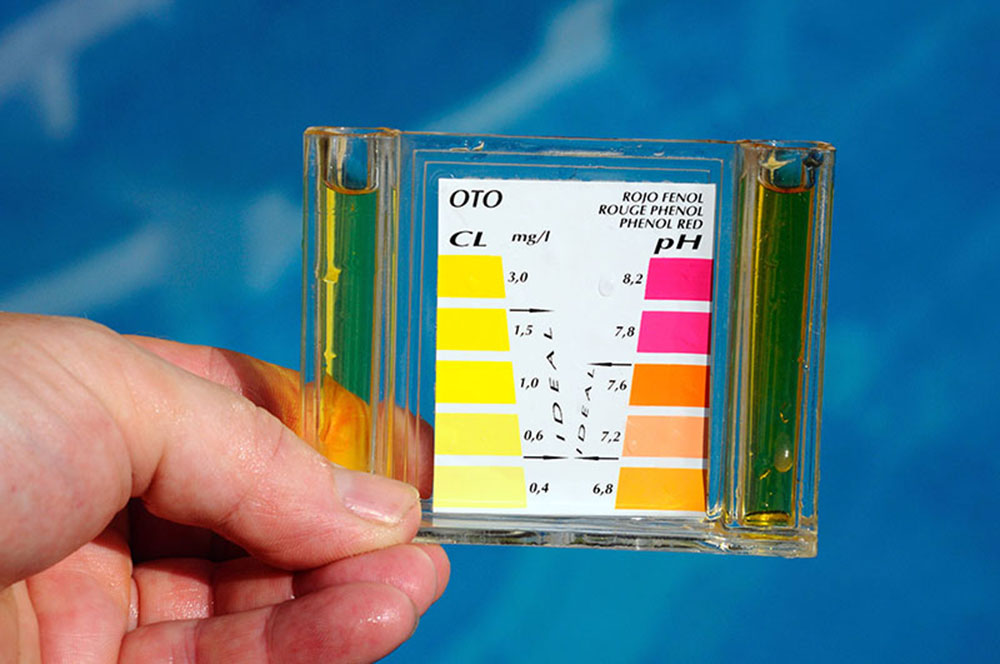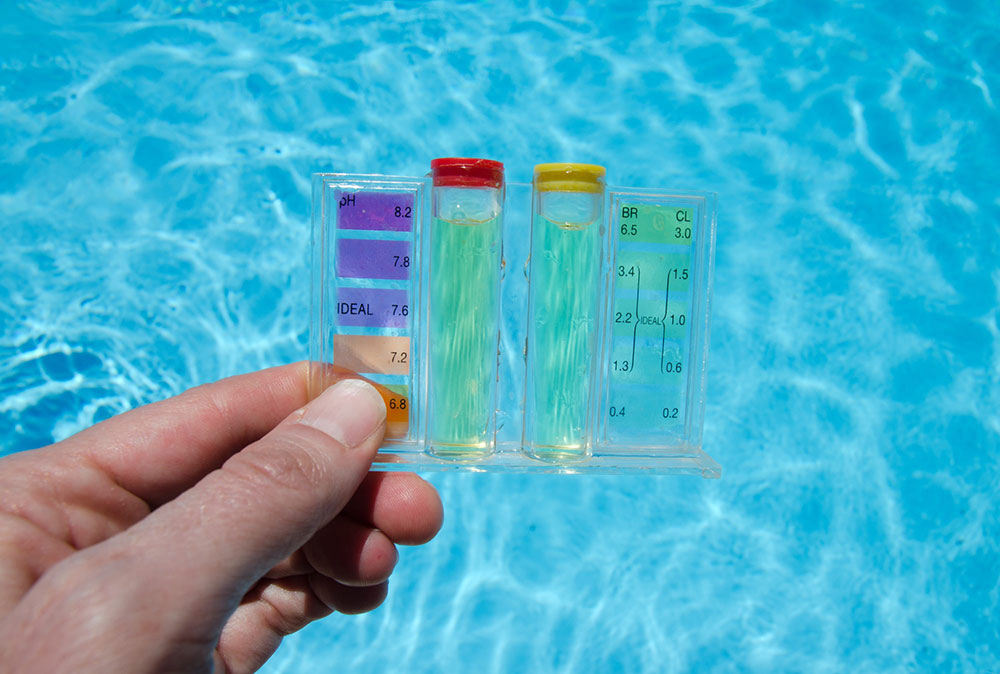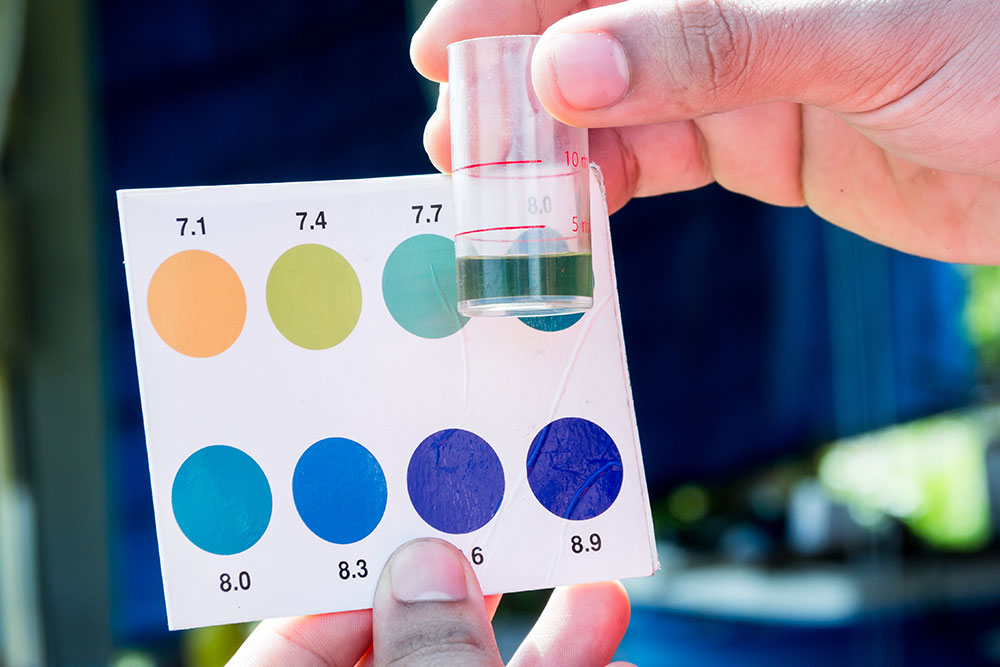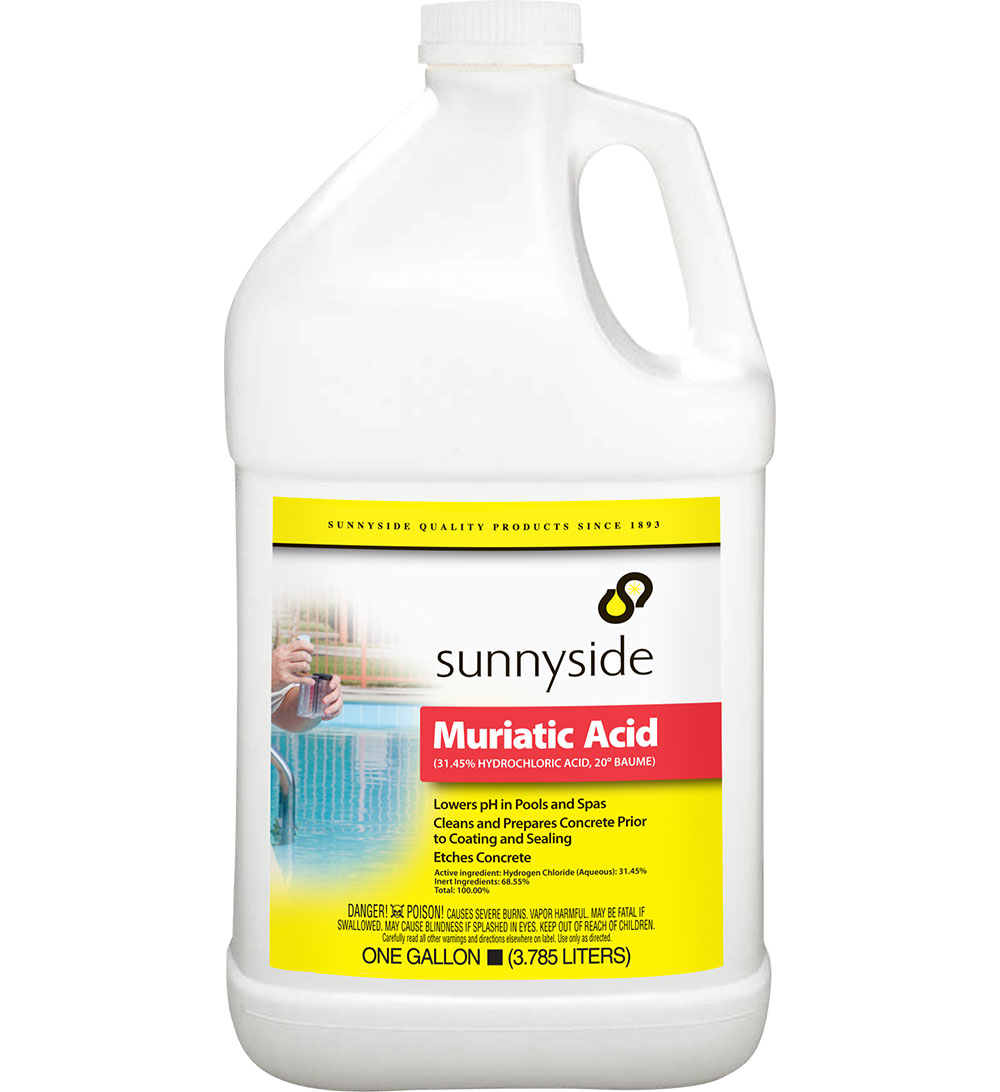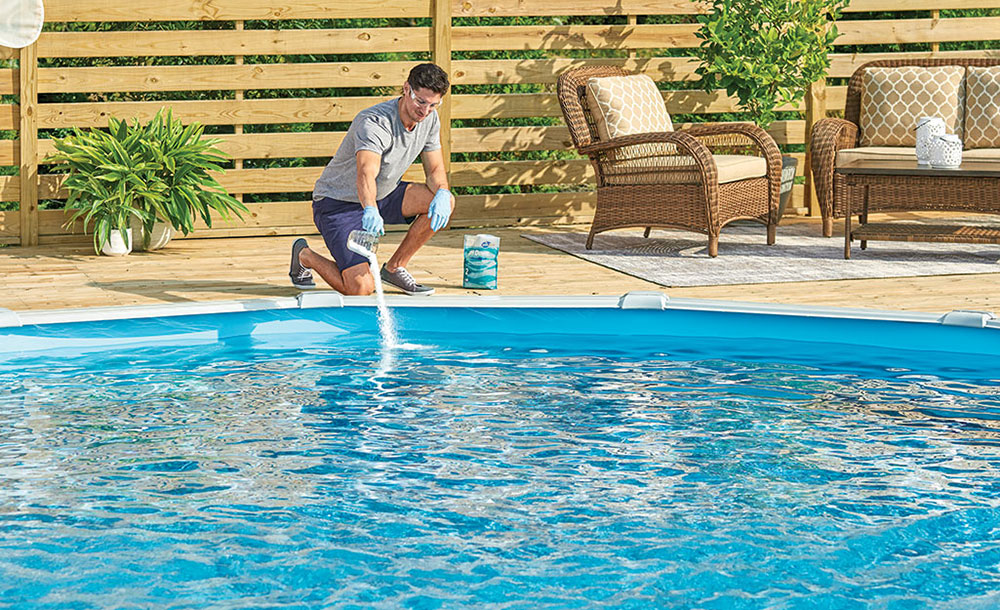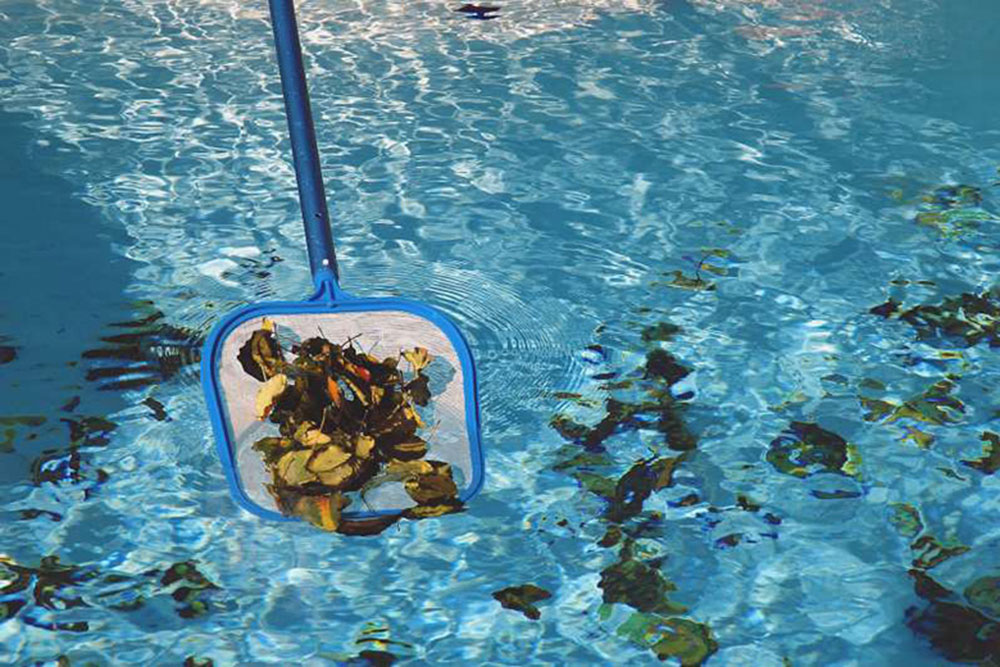Advertisement
Balance is essential in all things in life as well as for your swimming pool. The pH of the pool is a perfect chemical factor. Proper pool chemistry levels are those pools that have balanced levels of total alkalinity, pH, and Calcium Hardness.
If your swimming pool chemistry levels do not function, it is hard to get the balance again. So, keep your swimming pool balanced to protect your pool equipment and have comfortable swimming.
What is pH?
pH is a measure of the acidity or basicity of aqueous or other liquid solutions. It stands for Potential Hydrogen or “potenz Hydrogen.” With pH, you can determine if your pool is alkaline (base) or acid. It is a crucial chemical factor for the maintenance of a swimming pool.
If the pH of the swimming pool pH gets higher, then many problems such as carbonate scale and calcium dust occur. This problem happens quite often. For people who have a swimming pool at home, it is essential to take the required precautions to maintain the water pH levels and the contamination of the swimming pool.
How to manage pH level?
Pool owners must manage pool pH levels. It is an issue that never ends. However, the water pH varies from 1 to 14. If your pool has lower pH, then it is pretty probable to become acidic. On the other hand, if the pH level is higher, then the swimming pool water is alkaline. If the pool pH is 7, then it is right on the average. The pH of pool water is the right one when it is 7.2 to 7.8.
Acidic water can damage your equipment and your swimming pool surfaces. Plus, it can irritate your eyes and skin. Yet, water that has too much pH can provoke cloudy and scaling water. When there is a spike in your pool with pH, that results from various things.
First of all, it might result from the products and chemicals you use for the pool’s disinfection. The chlorine pools’ pH increases over time, and that is because of too many pool chemicals. Also, a high pH is caused by too much lithium hypochlorite and calcium in the water.
After you determine that your pool has a high pH level, we recommend you restore the balance. Luckily, lowering the pH is quite a simple process. For low pH, you should use a chemical additive (pH reducer or pH minus). There are essential pH-active ingredients such as sodium bisulfate and muriatic acid.
Sodium bisulfate
Dry acid or sodium bisulfate comes in dehydrated granules. It is considered relatively safe to handle and easier to add. Yet, you should avoid using this chemical on a windy day to prevent after-effects to your clothes and skin. When adding sodium bisulfate, you should move close to the water to add it as much as possible.
Do not add the powder to the skimmer area. It will dissolve after 10 to 15 minutes. Make sure you wear a dust mask to avoid inhaling dust, as well as equipment to protect your skin and eyes.
Muriatic acid
Hydrochloric acid or Muriatic acid is the acid that people use to acid wash tiles with extreme calcium buildup. It has commercial uses such as dissolving rock and pickling steel. It is a liquid, and make sure you protect yourself from unexpected splashes and spills.
If Muriatic acid meets up with your skin, it can provoke severe burns. These burns usually require some medical treatment, and you should be more careful. Muriatic acid is not just bad for your eyes but also can cause permanent damage such as blindness. Plus, it is crucial not to inhale Muriatic acid fumes.
If you inhale Muriatic acid, it can be harmful to your respiratory tract. To avoid this, make sure to have protective gear such as safety goggles, rubber gloves, and boots. Ensure all swimmers are out of the pool before you put the acid into the pool water. If you take these precautions, using Muriatic acid should be a relatively safe and straightforward process.
Use of Muriatic acid and Sodium bisulfate for lower pH in your swimming pool
Steps
It is essential to know how to add sodium bisulfate and muriatic acid to lower the pH of your swimming pool. We provide you with the following steps to consider:
- First of all, you need to test your pool pH by using a pool water testing kit. Proper pH levels are between 7.2 to 7.6. If you determine a high pH, then you should consider the intent to lower it.
- It is essential to read the manufacturer’s instructions to discover the exact amount of sodium bisulfate or muriatic acid to add according to the need to raise or lower the pH levels.
- In case you need to add Sodium bisulfate, first of all, put the powder into the return jet sites. The water enters the pool at this place. If you own above-ground swimming pools, you will need to help the water circulate by yourself and spread the chemical around with the help of your hands.
- If you need to add Muriatic acid, the first way is to turn off the pump and pour the liquid a steady and small stream at the water’s bottom. The other way is to add muriatic acid tenderly around the pool. Avoid concentrating the muriatic acid in one place because it can harm other pool parts if you put it in one area.
- Another vital thing to consider is allowing the filtration system to circulate the muriatic acid or the sodium bisulfate.
- You will be watching for the changes in pH and total alkalinity levels by doing a test after every 6 hours until it reaches the correct range. If pH is within the normal range, then you are done. Although pH is a pretty unstable factor in your pool chemistry, it’s possible to keep it balanced most of the time.
- If you test your pool chemistry a minimum of twice a week, you will not have any problems with pH levels.
- As even dirty leaves can damage your pool’s pH levels, try to keep it clean as much as you can.
- Destroying the buildup of chloramines will help the pool’s chemistry levels restore to normal. Consider shocking your pool more often.
- If the pool filter is working correctly, you will not waste time elbowing grease to keep the water balanced and clean.
Ending thoughts on how to lower ph in a swimming pool
Many factors can affect swimming pools’ pH levels, and you should be aware of changes. How to raise the pH and lower pH levels in your pool water chemistry is essential. It will make more accessible the process of keeping swimmers safe and the water cleaner. If you have a swimming pool, you have the chance to maintain the right pool chemical balance. Later, you will become familiar with your swimming pool pH levels.
Adding a powder of Muriatic acid or sodium bisulfate is one of the essential things to be done. Monitoring your swimming pool’s pH level with an excellent quality pH sensor will help you to ensure everyone’s safety and health. Once you stabilize your pool’s pH level or if a problem occurs, test your entire pool chemistry to discover if your pool needs chlorine or something else.
If you enjoyed reading this article on how to lower ph in swimming pool, you should read these as well:

